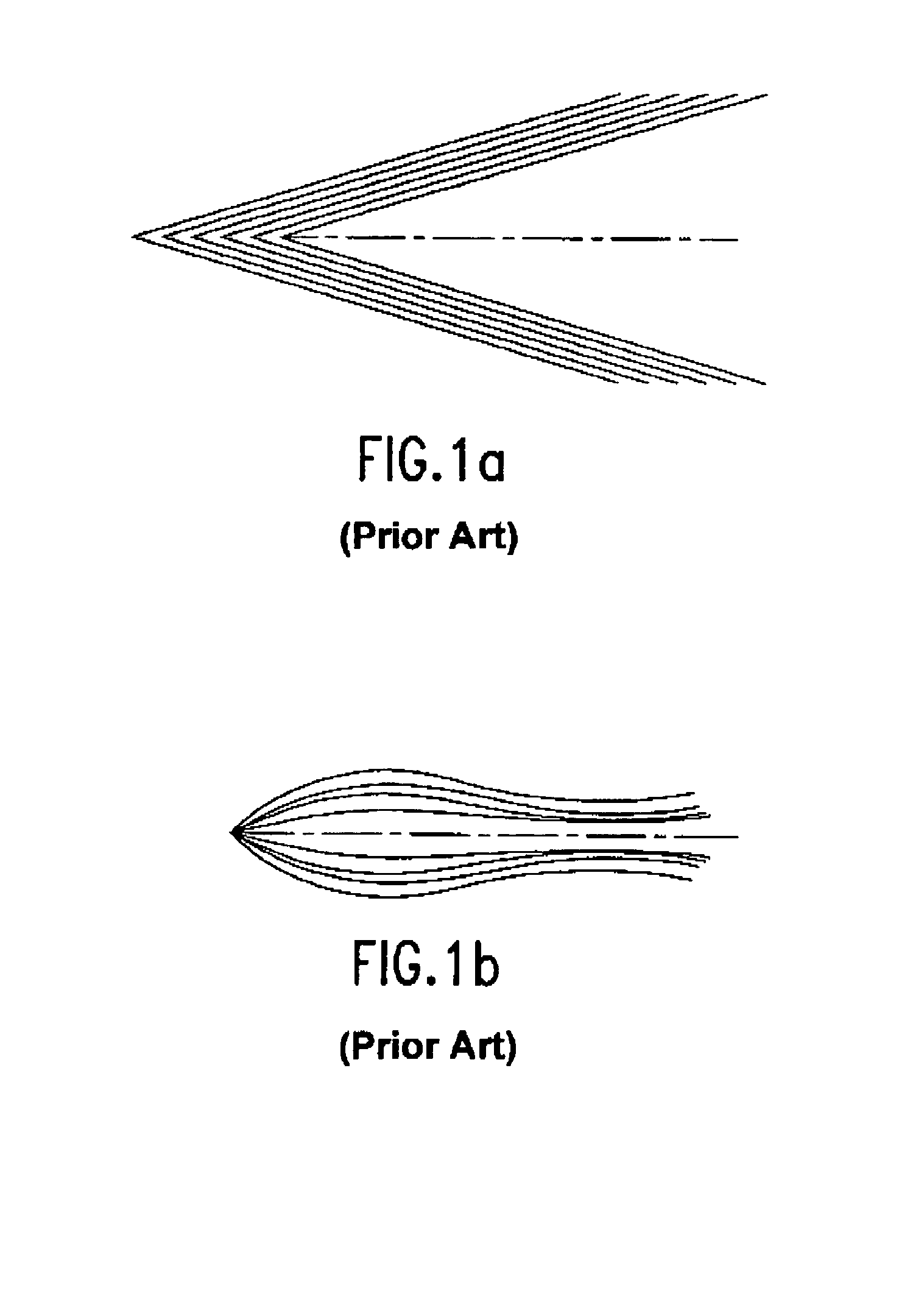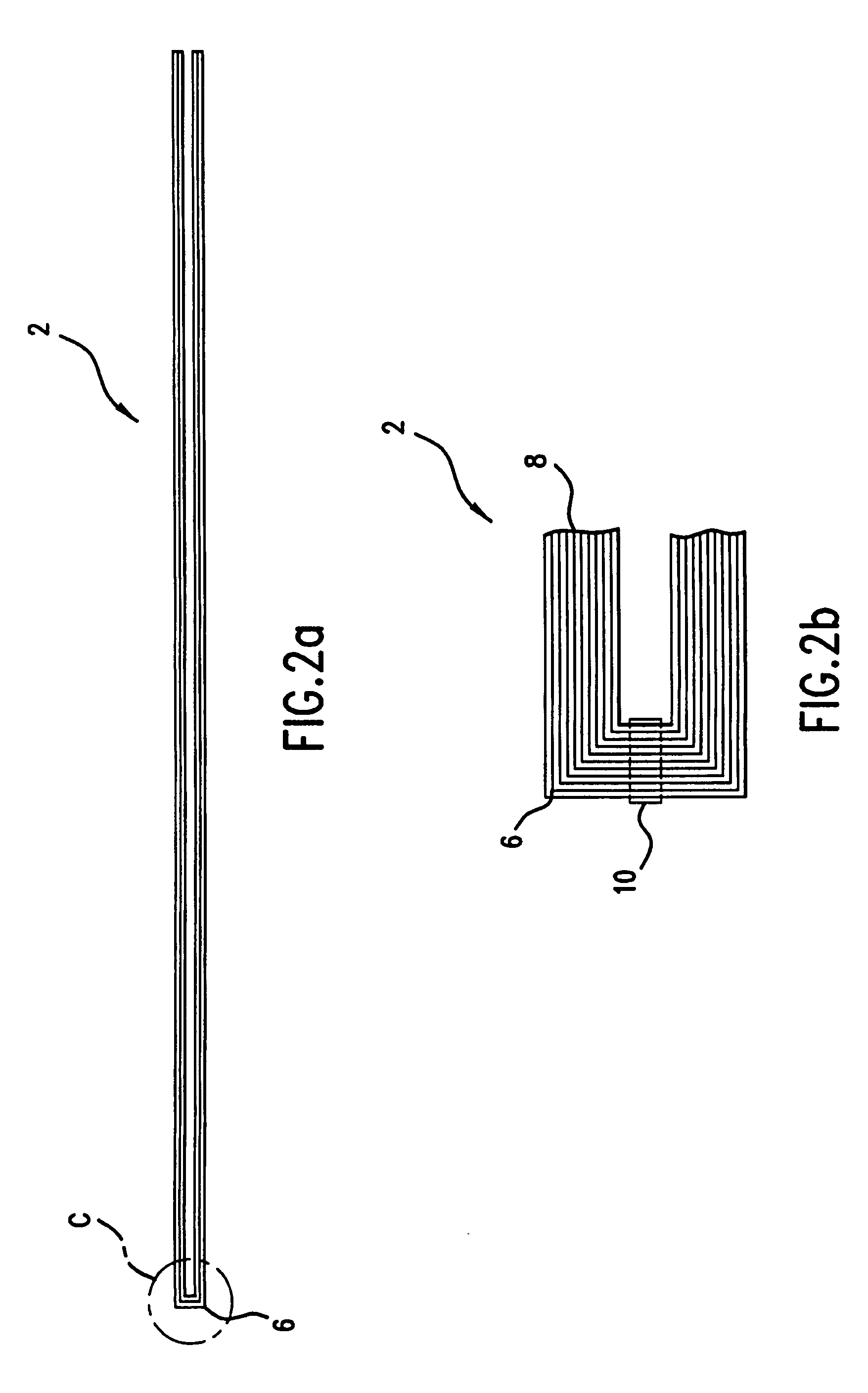Apparatus and method for creasing media to make booklets
a technology of apparatus and media, applied in the field of apparatus and method for making booklets, can solve the problems of inefficiency of folding approach, large power consumption, pages of booklets being scored and creased, etc., and achieve the effect of reducing the power required to complete the booklet, reducing the creeping, and eliminating the trimming step of the bookl
- Summary
- Abstract
- Description
- Claims
- Application Information
AI Technical Summary
Benefits of technology
Problems solved by technology
Method used
Image
Examples
Embodiment Construction
[0023]With reference first to FIG. 1, creasing is an essential process in booklet making. In standard industry processes for booklet making, the booklet is creased (folded) once it is finished (FIG. 1a) and stitched. The last operation is trimming. However, as discussed above, this created a pillowing defect (FIG. 1b). The present invention is related to a different approach in booklet making. In one embodiment of the present invention, the sheets of the booklet are processed one-by-one and subsequently stitched in order to complete the booklet.
[0024]Another important aspect of the present invention is that the previously discussed “creep” defect can be eliminated. Creep is caused when the inside sheets of the booklet appear to be longer then the outside sheets when they are actually the same size. This creep defect can be eliminated by trimming each sheet progressively to a different length in order to leave the outside sheets of the booklet longer than the inside sheets of the boo...
PUM
 Login to View More
Login to View More Abstract
Description
Claims
Application Information
 Login to View More
Login to View More - R&D
- Intellectual Property
- Life Sciences
- Materials
- Tech Scout
- Unparalleled Data Quality
- Higher Quality Content
- 60% Fewer Hallucinations
Browse by: Latest US Patents, China's latest patents, Technical Efficacy Thesaurus, Application Domain, Technology Topic, Popular Technical Reports.
© 2025 PatSnap. All rights reserved.Legal|Privacy policy|Modern Slavery Act Transparency Statement|Sitemap|About US| Contact US: help@patsnap.com



